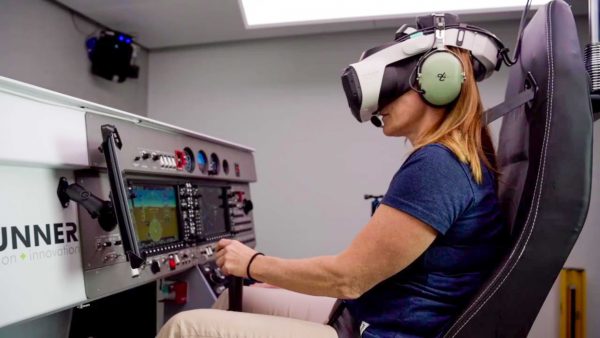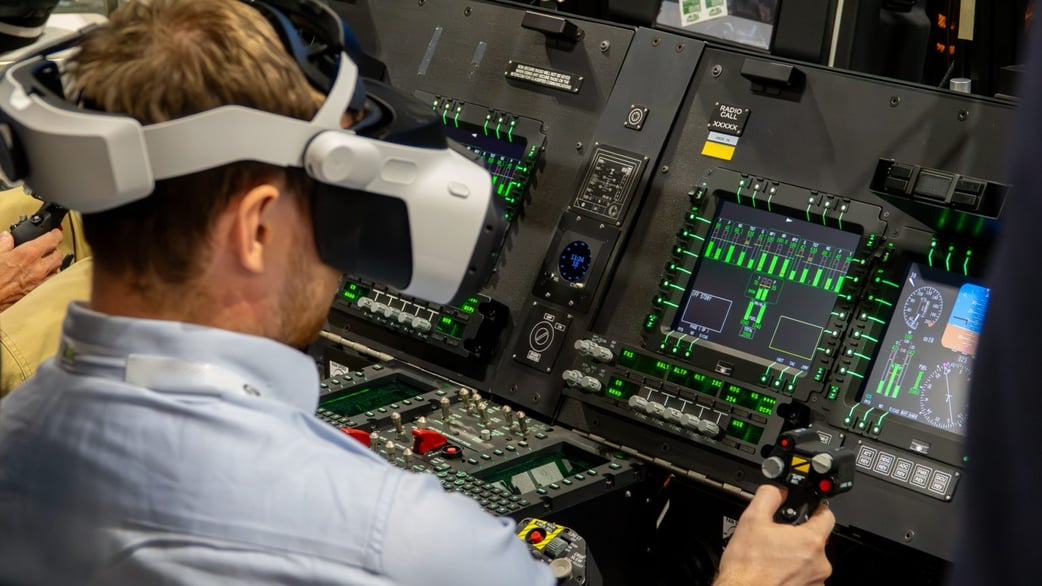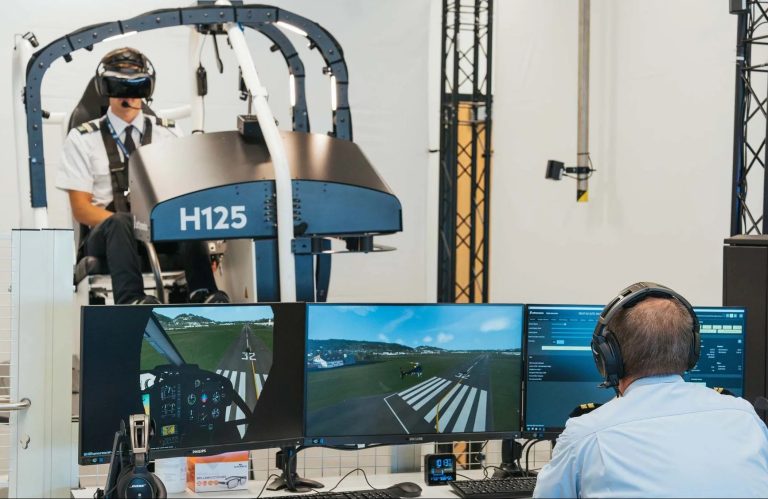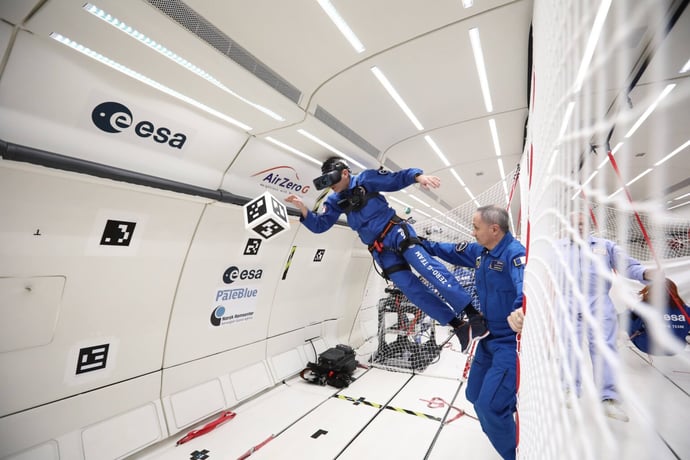Trusted technology for real-world pilot training

In June 2025, Brunner’s NOVASIM MR DA42 simulator became the first-ever mixed reality Flight Simulation Training Device (FSTD) qualified to European Union Aviation Safety Agency (EASA) standards.
For VR/XR hardware and solution providers, certification at these levels ensures that their technology is trusted for real-world pilot training—allowing training time to count towards official flight hours in training programs and making solutions more commercially viable. In this blog, we explore the qualification standards, the certification process, and what it takes for VR/XR-based flight simulators to meet FAA and EASA requirements.
Understanding FAA & EASA Flight Sim Certification Standards

Key Components for Certification:
- General Flight Deck: Ensures the cockpit environment accurately represents the aircraft being simulated.
- Flight Model & Aerodynamics: Requires high-fidelity aerodynamic simulations validated against real-world flight data
- Equipment Operations: Includes realistic communications, control loading, and force feedback systems.
- Instructor Operating Station (IOS): Provides centralized control for flight instructors
- Motion Systems: Ranges from fixed-base trainers to full six-degree-of-freedom movement.
- Visual Systems: High-resolution visuals are crucial for realistic training scenarios.
- Sound System: Advanced sound systems replicate engine noises, environmental effects, and ATC communications.
FAA & EASA Certification for virtual and mixed reality: the way forward
Vertex Solutions is partnering with the FAA, Varjo and Aechelon to identify the minimum XR system specifications required for effective use in official pilot training.
By integrating certified VR/XR flight training into pilot education programs, the aviation industry can increase training throughput, enhance safety, and provide a cost-effective solution to the growing demand for skilled pilots.
Certain aircraft categories stand out as ideal candidates for certified VR/XR simulators. These include fighter jets and canopy-style basic trainers such as the T-6 and T-38, as well as helicopters and electric vertical take-off and landing (eVTOL) aircraft. By achieving regulatory approval, VR/XR solutions have the potential to convert, replace, or augment existing simulators.
This advancement is particularly important in addressing the global pilot shortage, as XR-based simulators allow pilots to log virtual training hours that contribute to their certification requirements. In addition to counting toward official training programs, immersive VR/XR solutions provide significant advantages in terms of training effectiveness, flexibility, and accessibility.
Key benefits of immersive VR/XR flight training:
- Cost-Effectiveness – Compared to traditional full-motion simulators, VR/XR-based solutions require a fraction of the investment for both hardware and maintenance, significantly reducing training costs.
- Smaller Carbon and Actual Footprint – XR simulators require less space, fewer materials, and lower energy consumption, making them a more sustainable alternative.
- Flexibility & Portability – Due to their compact nature, XR-based solutions can be deployed anywhere, allowing for training independent of location or weather conditions.
- Enhanced Training Quality – The immersive nature of VR/XR provides a full-field-of-view experience, improving situational awareness, retention, and task repetition, leading to higher training efficiency.
- Scalability – XR solutions allow for faster training cycles, enabling pilots to complete more exercises in a shorter period, ultimately accelerating the learning process.
Certified VR training becomes a reality
Loft Dynamics has made aviation history by delivering the first virtual reality-based flight simulators to receive official certification from both EASA (2021) and the FAA (2024). The FTD Level 3 qualified H125 flight simulation training device represents an Airbus AS350 B3e (H125) which is the most common single turbine helicopter in its class.

For flight training providers aiming to secure FAA and EASA recognition for VR/XR-based training, the Varjo XR-4 Series stands out as an ideal head-mounted display (HMD) pairing. The devices’ advanced features and high-performance specifications make it well-suited for professional pilot training and simulation environments that demand uncompromising visual fidelity, precision, and seamless integration with aviation-grade software platforms.
Industry-leading head-mounted display technology
One of the most critical factors for FAA/EASA certification is the visual quality and immersion level provided by the training system. The Varjo XR-4’s ultra-high-resolution displays offer industry-leading clarity that ensures pilots can clearly read cockpit instruments, external flight references, and environmental cues without visual distortion. XR-4’s wide field of view replicates the natural human perspective, crucial for tasks like approach, landing, and situational awareness training. XR-4’s field of view exceeds all the current standards for certifications up to and including FAA Level D.
Advanced sensor fusion & gaze-driven autofocus
A key innovation in the XR-4 Focal Edition is its gaze-driven autofocus and advanced sensor fusion technology, which dynamically adjusts focus based on the user’s line of sight. This ensures that pilots experience realistic depth perception, allowing them to transition naturally between near and far objects.
Seamless compatibility with professional simulation software
The Varjo XR-4 Series is also fully compatible with industry-standard 3D simulation platforms, including Unity, Unreal Engine, Aechelon, Prepar3D, and X-Plane, ensuring seamless integration into existing FAA- and EASA-compliant training environments. This makes it easier for flight training providers to adopt Varjo-powered XR solutions without overhauling their existing simulator infrastructure.
Integrated eye tracking for instructor & performance assessment
Additionally, the XR-4 devices feature built-in eye-tracking technology, which enhances Instructor Operating Station applications by allowing instructors to monitor pilot gaze patterns, evaluate scan techniques, and provide more precise feedback during training sessions.
Secure military-grade compliance
Designed for secure environments, the Varjo XR-4 Secure Editon is suitable for military and classified training applications, meeting TAA-compliance, strict encryption and data protection requirements.
There’s a growing momentum behind VR/XR-based flight training solutions as they move closer to FAA and EASA certification. Immersive technology has proven it can meet stringent regulatory standards and be credited toward official flight hours, ultimately helping combat the global pilot shortage with scalable, efficient, and cost-effective solutions.



